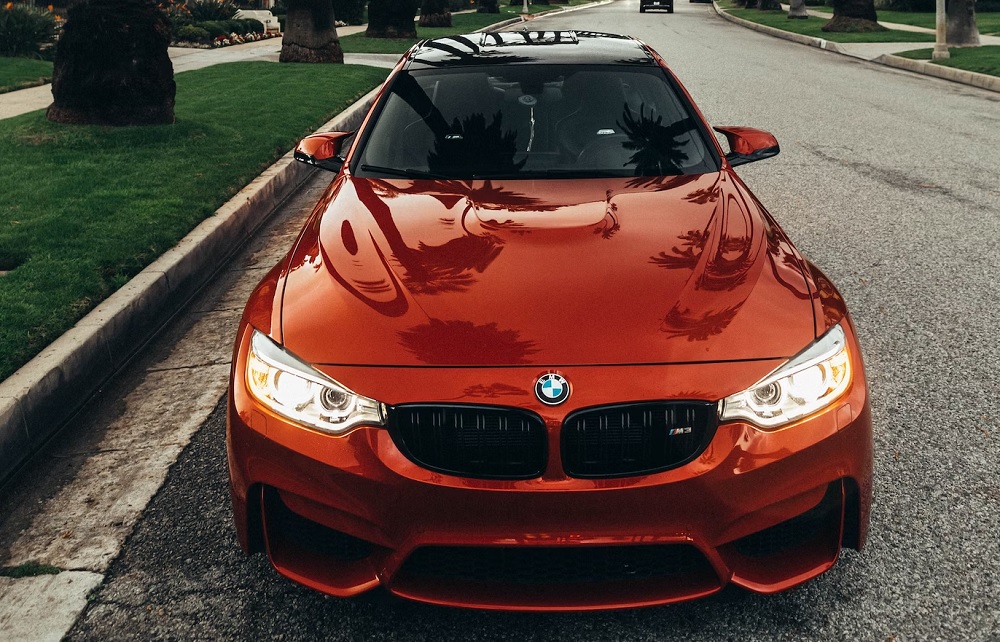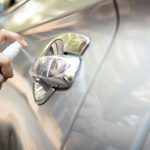In the realm of car care, enthusiasts are always on the lookout for effective and economical solutions to keep their vehicles looking brand new. One prevalent query that often perplexes car owners is, “Is rubbing alcohol safe on car paint?” This guide aims to provide a detailed exploration of the topic, shedding light on the nuances of using rubbing alcohol on your car’s exterior.
Understanding the Basics
What is Rubbing Alcohol?
Rubbing alcohol, scientifically known as isopropyl alcohol, is a versatile household item renowned for its potent cleaning properties. With a high evaporation rate, it’s commonly used to sanitize surfaces, making it a tempting option for those seeking to tackle stubborn stains on their automobiles.
The Dilemma: Safety on Car Paint
The primary concern revolves around whether the benefits of using rubbing alcohol outweigh the potential risks to the delicate paint job of your beloved vehicle. Let’s delve deeper into the intricate details.
The Pros and Cons
Pros of Using Rubbing Alcohol
- Effective Stain Removal: Rubbing alcohol excels at removing certain stains like bird droppings and tree sap. Its solvent properties make it efficient in breaking down these stubborn substances.
- Quick Drying: The fast-evaporating nature of rubbing alcohol ensures minimal water contact on your car’s surface, reducing the risk of water spots.
Cons and Potential Risks
- Paint Damage: High concentrations of rubbing alcohol may harm the clear coat, leading to dullness or discoloration over time. This is a crucial consideration for those with high-gloss or custom paint finishes.
- Rubber and Plastic Vulnerability: While it can be friendly to your car’s metal surfaces, rubbing alcohol may not be as kind to rubber and plastic components. Continuous exposure may accelerate wear and tear.
Dos and Don’ts
Dos
- Dilution is Key: If using rubbing alcohol, consider diluting it with water to reduce its potency. This ensures a milder solution, minimizing the risk of damage to the paint.
- Gentle Application: Apply rubbing alcohol with a soft cloth or sponge, avoiding abrasive materials. A gentle touch is essential to prevent scratching or wearing down the clear coat.
Don’ts
- Avoid Direct Sunlight: Applying rubbing alcohol under direct sunlight can intensify its impact on the paint. Opt for shaded areas to mitigate the risk of accelerated evaporation and potential damage.
- Excessive Use: Moderation is key. While rubbing alcohol can be effective, using it excessively may lead to unintended consequences. Reserve its use for specific stains and situations.
Alternative Solutions
1. Water and Soap Mixture
For routine cleaning, consider a mild soap and water solution. This is a safer alternative that eliminates the risk of paint damage. The soapy mixture effectively removes dirt and grime without compromising the integrity of the paint.
2. Specialized Car Detailing Products
Explore the vast array of car detailing products available in the market. These products are formulated to cater to specific cleaning needs without posing risks to your car’s exterior. From pH-balanced car soaps to waterless wash solutions, there’s a product for every discerning car owner.
Additional Considerations
1. Paint Types and Finishes
Different car paints have varying levels of vulnerability to rubbing alcohol. High-gloss finishes and custom paint jobs may be more prone to damage, while standard factory paints may be more resilient. Understanding your car’s paint type is crucial in making informed decisions.
2. Regular Waxing
Applying a quality car wax on a regular basis creates a protective barrier on the paint. This barrier not only enhances the car’s shine but also adds an extra layer of defense against potential damage from rubbing alcohol or other cleaning agents.
3. Testing on a Small Area
Before applying rubbing alcohol to the entire surface, it’s advisable to test it on a small, inconspicuous area. This allows you to assess how the paint reacts without risking widespread damage.
Expert Tips: Safeguarding Your Car’s Paint from Rubbing Alcohol
As car enthusiasts, preserving the immaculate beauty of our vehicles is a top priority. While rubbing alcohol can be a useful ally in certain situations, it’s essential to navigate its application with care to prevent potential harm to your car’s paint. Here are some expert tips to help you safeguard your car’s paint when using rubbing alcohol.
1. Mind Your Ratios: Dilution is Key
When opting for rubbing alcohol as a cleaning solution, strike the right balance by diluting it with water. This not only enhances its safety for your car’s paint but also ensures effective stain removal without compromising the integrity of the finish. (See Also: Can You Use Windex on Car Paint? Exploring Safe Cleaning Methods)
2. Choose the Right Cloth: Softness Matters
The type of cloth you use matters. Opt for a soft microfiber cloth or a sponge when applying rubbing alcohol. Abrasive materials can lead to scratches, diminishing the glossy appeal of your car’s exterior.
3. Time Your Cleaning Sessions
Avoid cleaning your car with rubbing alcohol under the scorching sun. High temperatures can accelerate the evaporation process, potentially intensifying the impact on your car’s paint. Choose a shaded area and time your cleaning sessions accordingly.
4. Moderation is Key: Use Sparingly
While rubbing alcohol can be effective, refrain from excessive use. Using it sparingly for targeted stain removal minimizes the risk of long-term damage to the clear coat and paint.
5. Know Your Paint Type: Tailor Your Approach
Different car paints react differently to cleaning agents. High-gloss finishes and custom paint jobs may require a gentler touch. Understand your car’s paint type to tailor your cleaning approach accordingly.
6. Regular Waxing for Added Protection
Invest in a high-quality car wax and make regular applications part of your car care routine. Waxing not only enhances the shine but also adds an extra layer of protection against potential damage from rubbing alcohol or other cleaning agents.
7. Conduct a Small-Scale Test
Before applying rubbing alcohol to the entire surface, conduct a test on a small, inconspicuous area. This allows you to gauge its impact on the paint without risking widespread damage. Prevention is the best approach to preserving your car’s aesthetics.
8. Explore Alternative Cleaning Solutions
While rubbing alcohol has its merits, exploring alternative cleaning solutions designed specifically for cars can provide effective results without the associated risks. Specialty car detailing products are formulated to cater to your vehicle’s unique needs.
9. Invest in Quality Microfiber Towels
Quality matters when it comes to the towels you use. Invest in high-quality microfiber towels for drying and buffing. These towels are gentle on the paint and help maintain a swirl-free finish.
10. Regular Maintenance is a Must
Consistency is key in car care. Regular maintenance, including washing and waxing, plays a pivotal role in preserving your car’s paint. Adopt a proactive approach to prevent the need for aggressive cleaning methods. (See Also: Can You Use Vinegar to Clean Car Exterior? Discover the Surprising Benefits!)
By incorporating these expert tips into your car care routine, you can confidently utilize rubbing alcohol when needed while safeguarding your car’s paint from potential harm. Remember, a thoughtful and informed approach to car maintenance ensures your vehicle stays in pristine condition for years to come.
FAQs: Navigating the Use of Rubbing Alcohol on Car Paint
As the query of whether rubbing alcohol is safe for car paint continues to circulate among car enthusiasts, it’s essential to address common questions and concerns. Let’s dive into some frequently asked questions to provide clarity on using rubbing alcohol in your car care routine.
1. Can I Use Rubbing Alcohol to Remove Tough Stains on My Car?
Absolutely, rubbing alcohol can be effective in removing stubborn stains like bird droppings and tree sap. However, it’s crucial to use it judiciously and follow recommended guidelines to prevent potential damage to your car’s paint.
2. Does Rubbing Alcohol Cause Fading or Discoloration of Paint?
High concentrations of rubbing alcohol can potentially harm the clear coat, leading to dullness or discoloration over time. Diluting rubbing alcohol with water and using it sparingly minimizes this risk.
3. Is Rubbing Alcohol Safe for All Types of Car Paint?
Different car paints react differently to cleaning agents. While rubbing alcohol is generally safe, it’s advisable to be cautious with high-gloss finishes and custom paint jobs. Always test on a small area before widespread use.
4. Can I Apply Rubbing Alcohol in Direct Sunlight?
It’s not recommended to apply rubbing alcohol under direct sunlight. High temperatures can accelerate the evaporation process, intensifying its impact on the paint. Opt for shaded areas for safer application.
5. How Often Can I Safely Use Rubbing Alcohol on My Car?
Moderation is key. Frequent use of rubbing alcohol may lead to unintended consequences, such as paint damage. Reserve its use for specific stains and situations, opting for gentler cleaning methods for routine maintenance.
6. What Are Alternative Solutions to Rubbing Alcohol for Car Cleaning?
For routine cleaning, consider a mild soap and water solution as a safer alternative. Specialized car detailing products designed for specific purposes also offer effective cleaning without the risks associated with rubbing alcohol.
7. Can Rubbing Alcohol Damage Rubber or Plastic Components of the Car?
Yes, rubbing alcohol may potentially harm rubber and plastic components over time. Exercise caution to prevent prolonged exposure to these materials. Consider using alternative cleaning solutions for such parts. (See Also: How to Polish Aluminum Wheels by Hand: A Comprehensive Guide for Car Enthusiasts)
8. Does Waxing Help Protect the Car Paint from Rubbing Alcohol?
Yes, regular waxing creates a protective barrier on the paint, adding an extra layer of defense against potential damage from rubbing alcohol or other cleaning agents. Waxing also enhances the car’s shine and prolongs the life of the paint.
9. Should I Conduct a Test Before Using Rubbing Alcohol on My Car?
Absolutely. Conducting a small-scale test on an inconspicuous area allows you to assess how the paint reacts to rubbing alcohol. This precautionary step helps avoid potential widespread damage.
10. Are There Any Recommended Microfiber Towels for Car Cleaning?
Investing in high-quality microfiber towels is advisable. These towels are gentle on the paint, providing an effective way to dry and buff your car without causing scratches or swirls.
By addressing these FAQs, you’ll gain a more comprehensive understanding of how to safely incorporate rubbing alcohol into your car care routine while preserving the integrity of your vehicle’s paint.
Conclusion
In the pursuit of a spotless car exterior, caution should be the guiding principle. While rubbing alcohol can be a valuable tool for specific cleaning tasks, its potential risks demand a careful and informed approach. Assess your unique needs, weigh the pros and cons, and choose the car care method that aligns with your goals.
Remember, maintaining your car’s aesthetics is both a science and an art. Armed with this comprehensive guide, you now possess the knowledge to strike a balance between cleanliness and paint preservation. So, is rubbing alcohol safe on car paint? The answer lies in the details, and with this guide, you’re well-equipped to make an informed decision. Happy car caring!



